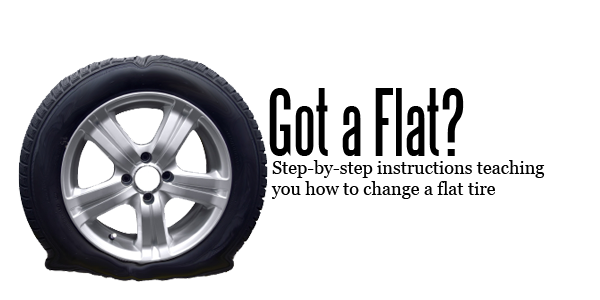Most ATV owners will at some time have to repair or change a tire on their bike. Recently, I decided it was time to stop being depended on a tire shop to do this job for me. I set out to find the best way to do this job myself.
I did the research, I did the testing, and have found a method that works quite well. This guide will tell you what you need to know to change an ATV tire by hand.
You can get the job done without breaking the bank on expensive specialist tools. But some basic hand tools are required to be able to do the job safely and efficiently.
Page Contents
Before will get into the actual guide, we’ll have a quick look at what many consider to be the hardest part of changing an ATV tire; breaking the bead.
On the inside of the rim, close to the lip, there is a small bump called the “bead retainer”. This little bump goes all the way around the circumstance of the rim.
Then, on each edge of the tire, you find the so-called tire bead. This part of the tire contains a strong steel cable that goes all the way around the tire as well, creating a strong steel inforced loop.
Close-up of the tire bead section of the tire.The tire is beaded when the tire bead has been pressed over the bead retainer and rests against the inside of the lip of the rim. When in this position, the tire is prevented from sliding sideways on the rim itself.
So the primary purpose of the bead retainer is to keep the tire in place. Aggressive riding would otherwise force the tire sideways and it would lose its seal.
It’s not, however, what makes the tire airtight. That’s mostly achieved by the air pressure inside the tires. The air makes sure that the tire is always being pushed outwards against the lip of the rim.
The air makes sure that the tire is always being pushed outwards against the lip of the rim.
Off-road and trail riding will often involve extreme sideways forces and impacts being inflicted to the wheel. Riding steep side-hills, hitting stumps and landing jumps are often when you are most likely to involuntarily break the bead.
On-road tires will not be faced with challenges like these under normal circumstances.
In addition, off-road tires usually run at a much lower tire pressure. As a result, there is a lot smaller force that pushes the tire outwards against the lip of the rim.
This means the wheel on off-road vehicles has to do a better job at keeping the tire beaded so that you don’t end up with a flat all the time.
To achieve this the tire beads on ATV tires, UTV tires and other off-road tires are extra heavy-duty. Also, the bead retainer bump is usually a bit bigger.
This is great for keeping the tire seated when riding. But it’s also that much more challenging when you want to break the bead.
There are many ways to break the bead of a tire.
What most of the methods have in common is that they involve some sort of tool. Some of which are quite expensive, while others are almost free.
At the higher end of the scale, you have the several thousand dollars tire changing machines that the tire shops use. These are very effective, but usually way out of budget for the average home mechanic.
At the other end, you have some more-or-less effective, almost free, and sometimes downright dangerous DIY solutions.
Underneath are the most common options, good and bad.
I’ve included my top 3 recommendations which are the ones I consider to be the most effective and least risky.
That’s “least risky”, not risk-free. You can still mess up. If you want risk free, take the tire to a tire shop.
This may sound brutal, and that’s exactly what it is. The method is completely free, as long as you already own a truck, and don’t break anything in the process.
The method is completely free, as long as you already own a truck, and don’t break anything in the process.
The idea is that you lay the wheel flat on the ground, and drive your truck over the tire part of the ATV wheel.
While there are several reports of people successfully performing this method, it’s not one that I recommend. There is a great chance of bending or damaging your rim with this method. Its effectiveness is also quite questionable.
Lay the wheel flat on the ground with a small amount of air (about 3-5PSI) still left in the tire. Then place a piece of 2×6 lumber on top of the tire, as close to the rim as possible.
The idea is you slowly drive a truck up the piece of lumber until the weight of the truck breaks the bead. It may be necessary to reverse, reposition the tire and apply weight several times before the bead will break.
Then back off, refill with 3-5 PSI of air to stiffen the tire and do the other side.
This method is fast and may work fine in most cases. But it’s not something I would suggest for anyone as their go-to method for de-beading a tire.
There is a lot that can go wrong, and no guarantee it will work. If you forget to leave some air there is a great chance of damaging the tire. The piece of lumber fill just slides down the tire sidewall.
And if you leave too much air the tire can blow. Or if you use a car without enough of clearance, you will rip the bumper right off on the way down.
I wanted to find the best, almost free DIY method for breaking the bead on an ATV tire. Not all ATV owners have access to welding machines, so I decided it had to made from wood.
I made 3 different models before I found a design that performed ok. I had good faith in this first design. The idea, found on a motorcycle forum, is really clever. It should work fine with motorcycle tires and such.
But the ATV bead was too strong. The hardware or the wood itself kept breaking on all three versions I built.
The hardware or the wood itself kept breaking on all three versions I built.
I ended up with a really simple design. All you need is a few feet of two by four and a couple of relatively strong hinges. The tool has to be mounted securely to a wall or a post as I did
Two pieces of wood and a couple of strong hinges give you a decent bead breaker in no time. Remember to cut the short piece of wood at about a 15-degree angle.This is the most effective and reliable solutions I have found. That is, for those that do not want to spend a lot of money on tools or don’t want to spend a lot of time on complex fabrication.
You’ve probably seen this tool or a variation of it at some point. You can get them at almost any auto supply or hardware store. They are relatively cheap and works really good on many types of small to medium sized tires.
This portable tire changer is my go-to tool whenever I need to de-bead a tire at home.
The tool needs to be bolted to the floor or some other heavy object to be operated effectively. And, it does require some getting used to.
But many users struggle to successfully break the bead of ATV tires with these things. The bead may be seated so well that the tool instead of breaking the bead just slip and slide down the sidewall of the tire.
When this happens you not only risk damaging your tire but will also build up quite the frustration from each failed attempt.
Despite its flaws, I’ve still listed this tool as recommended. Why? Well first off, they are relatively cheap. And when they do work, they are actually quite effective.
More importantly, there is a little trick you can use to make them work a lot more effective on ATV tires.
To prevent the tool from sliding down the sidewall of the tire, you should leave just a little air in the tire. Do not use more than 3-5 PSI. This will allow you to apply a lot more pressure by the bead before the tool wants to start sliding.
Often this is what makes the difference between a successful and a failed attempt.
It’s also a good idea to spray the bead with some soapy water before you try breaking the bead.
But even when applying these tricks, you may find that this tool will struggle to break the bead on the most stubborn ATV tires. If you are looking to change tires on your 10 years old OEM 400EX wheels, you may have to upgrade to the best tool on the list.
A company called BeadBuster sells a tool that clamps onto the rim and forces a wedge in between the rim and the tire. By rotating a bolt you force the bead down and over the bead retainer.
This tool has one main advantage over the tools we have looked at so far. It does not press down on the thin sidewall of the tire, but directly onto the tire bead.
This reduces any chance of damaging the wheel and tire. The pushing force created by turning the tightening-bolt should be powerful enough to break the bead on almost any ATV tire.
They are the most expensive among the tools I recommend. But if you accept the cost, they are the best option, next to getting a professional tire changing machine.
Another tool that seems to be just as effective as the portable tire changer, are the so-called “Tire Plyers”. These also work by the principle of jamming a wedge in between the rim ant the tire but uses a long handle to lever the wedge down.
It will work on most ATV tires, but some users report breaking the tool because how tight their ATV tire was beaded. This is why I cannot give them a recommended badge by now.
I have not, however, tested these myself. As soon as I get my hands on a pair I will give them a test and consider adding them to the recommended list.
The second most tricky part of changing an ATV tire by hand is mounting it back on the rim again and having it bead properly.
With a couple of tire irons and some soapy water, you should be able to get the tire onto the rim without any big issues. Just take your time and work systematically.
Just take your time and work systematically.
As for beading the tire, this can be a bit tricky on tubeless tires. But in the guide, I’ll show you a simple trick I have learned that should help you succeed.
This guide is for tubeless ATV tires. The procedure for tubed tires is very similar. But then you also need to release the tire-valve and make sure you don’t damage the tube when removing the tire.
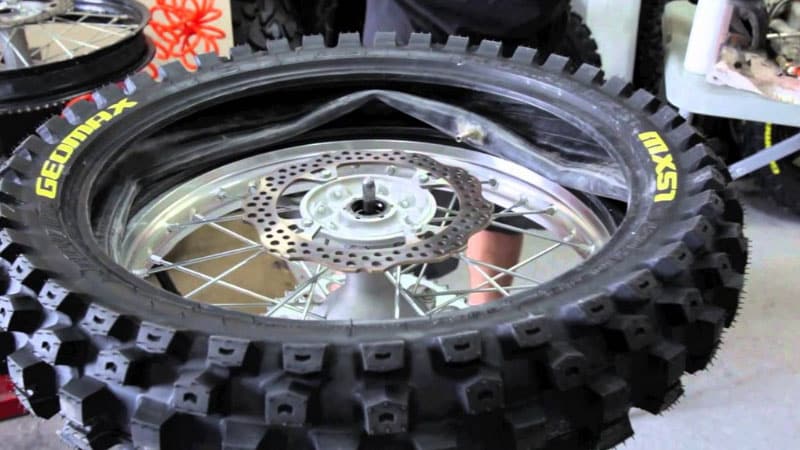 They are very powerful and I’ve seen more than once how quick they can snap a bolt.
They are very powerful and I’ve seen more than once how quick they can snap a bolt.I recommend getting a valve stem core removal tool for this part. They are cheap and saves you a lot of time.
While it is possible to deflate the tire just bu pushing the tire valve pin, it will take forever. With a valve stem tool, you can remove the valve stem which will deflate the tire in seconds.
Lefty-loosey, righty-tightly. You know the drill.
Keep two fingers on the valve when unscrewing it so you don’t lose it when the air starts flowing.
Remove the valve stem core, using a valve stem core tool.As soon as the air is out, put the valve stem core back in so you don’t lose it. Do not over tighten, as the threads on these are quite thin.
Choose between one of the recommended procedures for breaking the tire bead;
The DIY de-beading tool.
Portable tire changing tool
Bead buster
If none of these methods breaks the bead, it’s time to take the wheel to a tire shop.
 Remove the ATV tire from the rim with tire irons
Remove the ATV tire from the rim with tire ironsYou need two tire irons or a couple of big screwdrivers to perform this step. It’s also recommended that you get some plastic wheel protectors, or use tire irons with protective plastic so that you won’t damage your rims.
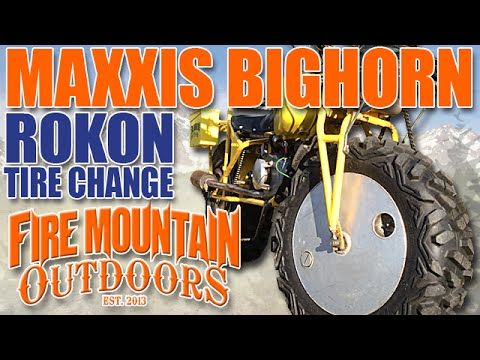
Before you can begin installing the new tire, you need to make sure that the bead of the rim is smooth and clean.
Wash off any dirt, sand or other debris. You may need to use a wire brush to get a good result.
If there is any rust, this has to be removed before you install a new tire. Tools you can use to remove the rust:
Ideally, you want to remove all rust. It’s important that the surface is smooth, so you get a proper airtight seal between the tire and the rim.
After removing the rust you will be left with exposed metal that will start rusting immediately if left untreated. I recommend that you paint it with a quality rust inhibiting paint before installing the tire.
By doing so, you will likely be able to maintain an airtight seal for much longer, and the bike will look a bit healthier.
If your rim and tire are completely free of any damage or nicks by the bead, you may skip this step if you want.
But, as you may know, ATV tires are prone to having tire leak issues by the bead. This happens because the way they are used.
When you ride off-road, sand, dirt and other debris will be caught in the little gap between the rim and tire. This will wear down the paint, creating corrosion issues over time.
There’s also a good chance that you will damage the rim at some point by hitting a rock.
Therefore, I recommend that you always apply a coat of bead sealer on the tire bead before installing the tire. Consider it a cheap insurance against problems down the road.
Consider it a cheap insurance against problems down the road.
A good alternative for using purpose made bead sealer is using some silicone.
Be aware that both of these products come with the disadvantage of making it a bit harder to break the bead the next time you need to change the tire.
Spray some soapy water on the bead retainer. Again, this is so that the rubber will slide more easily against the metal rim.
An even better alternative is using a light coat of baby powder on the lip of the rim and tire bead. Give it a try if you struggle to get the new tire back on the rim.
Do not use WD-40 as lube as this may deteriorate rubber over time.
Now it’s time to reinstall the tire.
 Elevating the rim slightly makes installing the tire easier.
Elevating the rim slightly makes installing the tire easier.Now you’ve got the tire onto the rim, but it’s still not completely mounted. You need to re-bead the tire to the rim, using air pressure.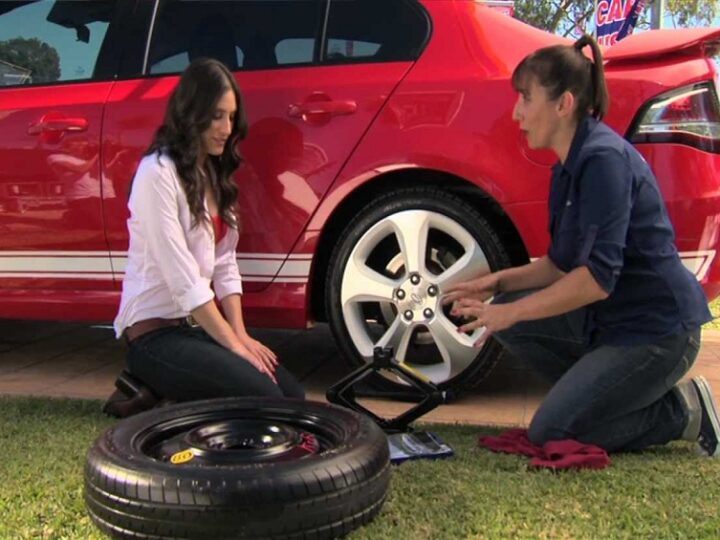
But if you try putting air into the tire as it sits right now you will likely get no result. This is because you have a gap between the tire and the rim that is too big.
The air compressor alone won’t be able to supply enough airflow to get it to seal. The air just escapes.
If you happen to have a specialist tool like a “shock-filler” or similar standing in the corner of your garage, now would be a good time to get it.
But most of us don’t have tools like this. And for the occasional tire job, there is not really a need for one neither. There is a simple trick you can use to get the job done.
No, it’s not the one where you put starter fluid inside rim and light it on fire. While this may work, there is another way that is safer, and just as fast.
All you need is a ratchet strap. If you don’t have one, now’s the time to get one. Use the strongest strap you can find. If the strap breaks, it does so with great force!
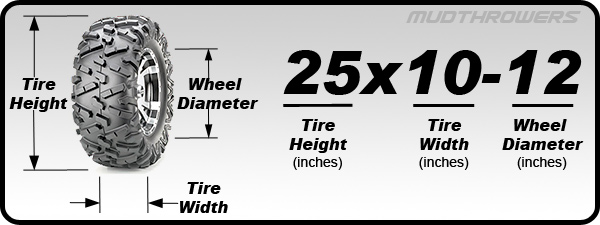 The strap should sit in the center of the tire.
The strap should sit in the center of the tire.All that is left now is to put air back into the tire until it beads. I recommend using a tire-inflator that has a gauge for this part.
 It will happen first on one side, then on the other soon after. Stop when the tire has beaded or if it has not beaded at about 7-8 PSI.
It will happen first on one side, then on the other soon after. Stop when the tire has beaded or if it has not beaded at about 7-8 PSI.Can you change ATV tires at home?
With a few tools and some basic mechanical skills, it’s very doable to change ATV tires at home.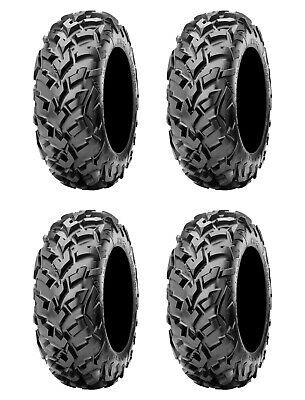 But be aware that air under pressure is potentially very dangerous, so necessary precautions must be taken.
But be aware that air under pressure is potentially very dangerous, so necessary precautions must be taken.
How hard is it to change ATV tires?
ATV tires and other off-road tires have stronger beads than on-road tires. This makes them a bit harder to change. But when you know the steps, changing tires is about as hard as replacing brake pads or installing a new exhaust system.
Written by Rob in ATV Guides
ATV tires wear down and need to be changed when the tread gets to a certain depth. The exact depth varies based on what’s recommended in the owner’s manual. Today, I will explain if it’s hard to change ATV tires.
Overall, it’s not hard to change ATV tires. But, you do need an average level of strength to use the tools involved. The process involves unscrewing the nuts and taking the tire off. Then the tire needs to be removed from the rim and a new one put on.
After that, you place it back on the wheel base, and screw each of the nuts back in and you’re done. To remove the tire from the rim requires a special tool called a bead breaker. As well as, two tire levers. However, there are a few hacks to get it done if you don’t have these tools. In this article, I will explain the process involved in changing the ATV tires yourself, when you should change your ATV tires, and how long ATV tires last.
To remove the tire from the rim requires a special tool called a bead breaker. As well as, two tire levers. However, there are a few hacks to get it done if you don’t have these tools. In this article, I will explain the process involved in changing the ATV tires yourself, when you should change your ATV tires, and how long ATV tires last.
It’s definitely possible to change your own ATV tires. The most difficult part is removing the tire from the rim. The main consideration is whether you want to get a bead breaker or not. It’s possible you already have a bead breaker. However, most people don’t have one.
A bead breaker costs around $80 for a cheap one, but most are in the range of $150 to $200. But, it’s also just as easy to pop into your local mechanic or even a Walmart and have them remove the tire from the rim for you. It costs somewhere in the range of $10 to $20 a tire.
It’s also possible to remove the tire from the rim using nothing more that a 2×4 piece of wood.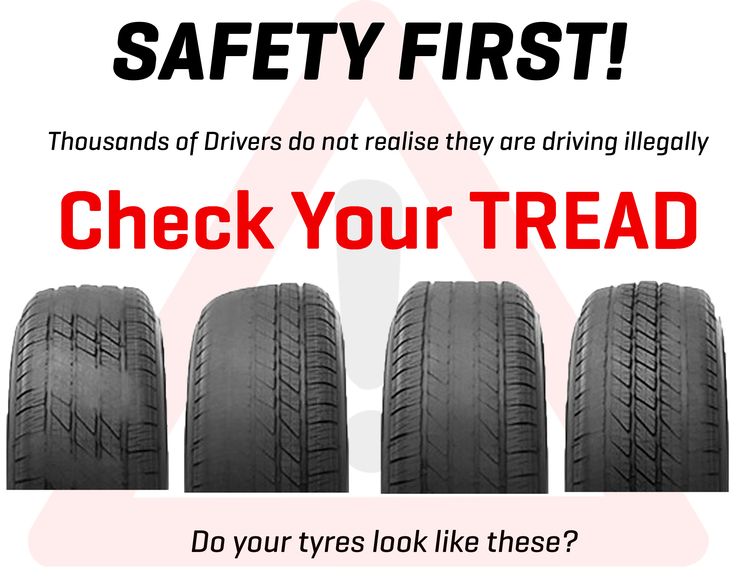 Here’s a video that shows how it’s done. He explains the 2×4 method after showing the first method.
Here’s a video that shows how it’s done. He explains the 2×4 method after showing the first method.
ATV owners’ manuals such as the Polaris Sportsman, and Alterra Arctic Cat don’t provide any detailed instructions for how to remove the tire from the rim. Certain ATV owners’ manuals simply say to have it done by a qualified professional.
Here’s the way a professional would replace a tire, and the method is simple enough:
The main thing is you need the proper tools, which are a bead breaker and two tire levers. I looked around at how much most people have said it costs to get tires replaced at a mechanic or store like Walmart, and on average it costs about $10 per tire. It’s also recommended to call around, as there can be quite a bit of variance in price between difference stores and tires shops/mechanics. People have reported that Walmart will replace ATV tires for you for very cheap.
When getting your tires to a mechanic or store to replace them you may consider driving it on the road. However, this is not recommended in virtually all ATV owners’ manuals. I discussed this in this article about whether the road hurts ATV tires.
However, this is not recommended in virtually all ATV owners’ manuals. I discussed this in this article about whether the road hurts ATV tires.
Therefore, you should remove the tires from your ATV and put them in your car to take them to a mechanic or shop to replace them. If you can get a good deal at a shop for new tires, it can save you a bit of time to buy the tires directly from the shop or mechanic where you’re getting them replaced. But, it’s also just as fine to order them online and take the new tires, plus your existing tires to the mechanic or store.
ATV tires don’t last forever, and therefore they need to be changed periodically. But, when should you change your ATV tires?
ATV tires should be changed when the tread is worn down by the amount recommended in the owner’s manual for your ATV. It is on average when the tread has been worn down and only 1/8” (3 mm) remains. As well as, if the tire has burst.
Some owners’ manuals recommend changing them sooner when they have 4 mm of tread left. Therefore, it’s always best to look in your owner’s manual for how worn the tread should be before you need to change them.
Therefore, it’s always best to look in your owner’s manual for how worn the tread should be before you need to change them.
If an ATV tire leaks and deflates slowly over time to the point where you need to fill it with air regularly then it can be repaired using a tire repair kit. Getting a new tire costs in the range of $50 or more and can cost around $20 to fit it. If the tire is already pretty worn then it makes more sense to get a whole new tire rather than replace it.
ATV tires wear more easily on a hard surface compared to a soft surface. But, on average how long do ATV tires last?
ATV tires last somewhere in the range of 500 miles to 1000 miles (800 to 1600 km). Virtually all ATV owner’s manuals recommend not riding an ATV on the road. ATV tires will wear more quickly if ridden on pavement or rocky terrain compared to dirt, grass, and gravel.
To know whether your ATV tires need replacing you need to measure the tread depth. This is how far the tread sticks out from the grooves in the tires. ATV tires are not designed to be driven on the road or pavement and will cause a lot of wear on the tires.
This is how far the tread sticks out from the grooves in the tires. ATV tires are not designed to be driven on the road or pavement and will cause a lot of wear on the tires.
When the tires are installed care also needs to be taken to ensure that the tires are aligned. If they aren’t aligned correctly the tires won’t wear evenly.
How Often Should You Change the Oil on a Honda Dirt Bike?
Oil is one of the key things a dirt bike needs to keep the engine running well and avoid damaging the engine. It’s necessary to change the oil on dirt bikes. Today, I will explain how often you...
Continue Reading
link to Is the Suzuki Kingquad Good? - Details Inside!Is the Suzuki Kingquad Good? - Details Inside!
There are many different ATVs to choose from and Suzuki is a very well know ATV manufacturer. Suzuki primarily only has the Kingquad ATV model in a few different sizes. In this article, I will cover...
Suzuki primarily only has the Kingquad ATV model in a few different sizes. In this article, I will cover...
Continue Reading
August 31, 2017
The ATV is a great technique, but every ATV rider must know the simplest steps to repair his "beast". These activities include tire puncture repair .
ATV tires are different from car tires. nine0005 Low pressure quad tires , which increases the chance to puncture or cut the tire. Every ATV rider should have a puncture repair kit. ATV punctures are the norm rather than an emergency. And without tire repair experience, riding an ATV is very difficult.

When you notice leaks, you need to stop and start looking for a puncture. It is most convenient to look for a puncture by first removing the wheel, but the first stage can be carried out by dismantling the wheel. nine0003
If you are unable to locate the puncture, then remove the wheel and lower it into water, such as a puddle, lake, river. If the wheel is already heavily deflated, and the air is no longer coming out, then you need to pump it up and perform the described actions.
In the water you will immediately understand where exactly the air comes from
We take the wheel out of the water. Now you need a reamer, the tool helps to make the puncture surface rough on the rubber. This helps ensure a better bond between the adhesive and the rubber. We act like a file, only the effect is the opposite. nine0003
We take a tool to install the patch. This stage is the most responsible.
This stage is the most responsible.
We thread the tourniquet into the tool, it is desirable to thread it so that the patch has the same tips. We cover the patch with special glue. After that, we insert all this into the puncture site. insert into the tire halfway.
Now you need to quickly pull the tool out of the hole, but do not pull the patch with you. We install so many patches until the air stops coming out. nine0003
But before pumping, you need to let the glue dry a little.
After that, inflate the wheel, and when you are sure that the air is no longer escaping, but it is necessary to cut off the patch, leaving 3 millimeters of flagella so that the patch does not pop out while driving.
In the next article, we will analyze what to do with a tire side cut.
Given that you are here and want to recognize the full throttle of a 125cc ATV, you need to know what an ATV is and also how fast a 125cc ATV is.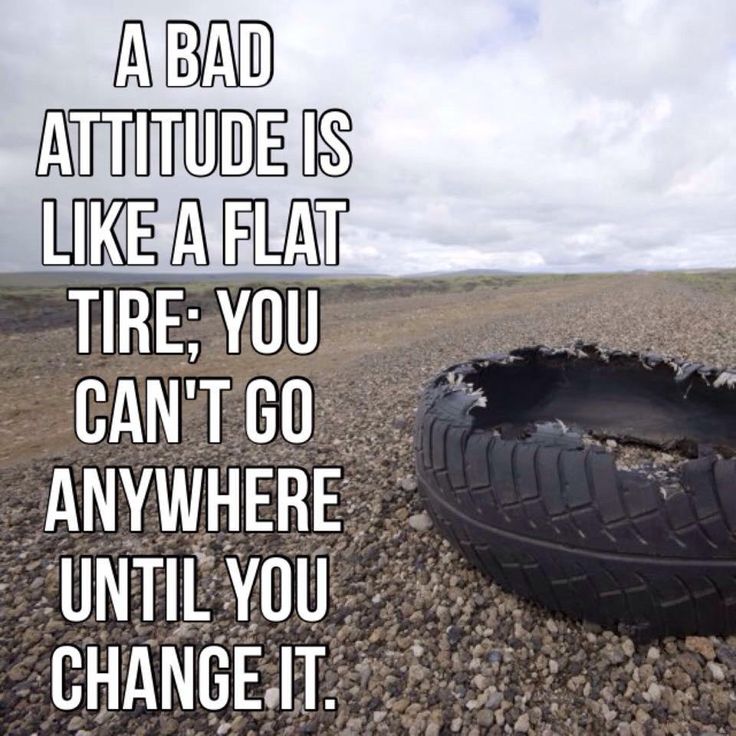
For beginners, an ATV is short for ATV. All-terrain vehicles of all types of soil provide the ATV with a large area.
125cc ATV mainly for youth. This is a safe choice for beginner bikers who are new to it and also want to learn more about driving as well as the roads. nine0003
Whenever we talk about 125cc, it is considered to be in the middle category because it can reach top speed and provide enough traction to help you get through the dirt without any problems.
When it comes to ATVs, top speed refers to the highest degree of speed a vehicle can achieve when traveling on the road. Full throttle varies from bike to bike and depends on a variety of factors which consist of the types of materials used and the components installed. nine0003
Contents
What does 125cc mean? The 125cc engine will take up 125cc, while the larger 700cc engine will take up 700cc. The more cubic centimeters an engine has, the more air and fuel it can consume, which usually results in more power.
125cc ATV can go up to 40 mph ideally . You can slow down to 10 mph and sometimes 5 mph, or you can hit the gas all the way to 40 mph. Youth ATVs are equipped with speed limiters to control their speed. .
Thanks to its many uses, the 125cc ATV The is an excellent choice as a starter for teens as well as the young children as it is fast enough to keep their passion going as well as running at around 22 mph or 38 mph. Most importantly, this is a great beginner quad, not powerful enough for serious riding technique, jumping, big climbs or racing. nine0003
It is extremely important to choose the right engine for you or your child when buying an ATV.
Depending on the power of the cylinder, you will surely be able to choose the right ATV for you. Look into joining a list for a better understanding.
Approximately 70 cc - they are used for children up to 11 years of age.
70 to 90 cc cm - they can be used by teenagers aged 12 to 15 years. nine0006
125 to 250 cc cm - suitable for both beginner teenagers and adults.
Cylinder size can start at 50cc and go up to 700cc.
But keep in mind that height is also an important factor when choosing an ATV. Classification from 125 to 250 cu. CM is ideal for beginners who are not familiar with wilderness riding and are unfamiliar with rough or rocky roads. One of the most practical tools for adults or professionals ranges from 450cc to 700cc. nine0003
If you are looking for an ATV for your child, you don't have to worry as you stay in the best area. From the list above, it can be seen that engines from junior to 90cc are suitable for children. But to boost the performance of an ATV, different brands have gone to great lengths to find some fantastic 125cc ATVs specifically made for kids.
They are supervised by professionals to make sure they are absolutely safe for children. Each kids quad has unique features as well as additional safety options. If your child loves the outdoors and travelling, an ATV can offer the best taste of nature and flexibility to their hearts, while the controls are still in your hands. nine0003
If you do a thorough research, you will certainly be able to find the right one for your child. A couple of points that might help is to make sure you buy one with a speed limiter and it has both headlights and taillights installed as they help a lot.
ATV suppliers generally do not set biker weight limits for their youth models. It has Optimum lifting capacity 364 lbs , engine stop button, and push button starter controls. The highest center of mass is cunning.
While a full-size ATV with a huge engine can fit an adult, the risk of injury to a teenager on such a device is much higher. For shorter riders, the 125cc ATV is a good choice for the . The 125cc ATV is not the smallest available, however it is not exceptionally large or powerful compared to other models. nine0003
For shorter riders, the 125cc ATV is a good choice for the . The 125cc ATV is not the smallest available, however it is not exceptionally large or powerful compared to other models. nine0003
1. Use the best fuel.
A quick and easy change you can make is to start using higher octane gasoline. Many ATVs don't need to use higher octane fuel from the manufacturer, but this can help. increase the efficiency of your engine .
If you can, do not use ethanol-based fuel, and also choose fuel with a higher octane rating of . It will cost a few dollars even more than inexpensive fuel, but you will definitely notice the difference when you step on the gas pedal.
Higher octane gasoline burns cleaner, providing better gas mileage and much less wear on the mechanical parts of your gas system. Of course, the best gas mileage on an ATV is not as noticeable, but there is a difference in performance.
2. Upgraded air filter.
You must be regular inspection of the air filter and clean it if necessary. If the air filter starts to get overloaded, it will certainly affect the amount of air the engine can use to run. Driving with a clogged air filter is almost like turning off your engine.
The increased air circulation these filters provide will definitely allow your engine to get even more air. Much more air-fuel mixture means even more power. nine0006
3. Adjust the throttle stop screw.
On many ATVs, if you look to the right side of the handlebar where the throttle is, you will see the boss. A screw will stick out on the handle, this is the throttle limiter. Throttle limiter will limit the amount of throttle You can provide your engine while driving.
Be sure to turn the screw all the way out if you are going to use the maximum throttle. To adjust this, simply loosen the lock nut holding the throttle stop screw in place, replace the screw, and tighten the lock nut by pulling it back. nine0003
nine0003
Check the throttle limiter screw to make sure you are getting the limit your engine can turn on.
4. Change tire size, weight and pressure.
Of course, tire pressure depends on the type of terrain you drive. When riding in sand or snow, lower tire pressure will certainly make you much faster, but on flat, hard surfaces, higher tire pressure can help a lot. more. I would of course is recommended to run at about 5 psi as good throughout the entire number.
If you want to make your ATV faster, you need lightweight aluminum wheels. Tire size can also make a difference, depending on what you're doing. Make sure you choose the right tire size for your ATV and your edges.
If you want much more speed, choose a smaller tire. nine0006 If you need a higher top speed, choose a larger tire. Tire size is very comparable to replacing your tailoring sprocket. A larger tire will need even more power to convert it, but will cover a larger area in one change.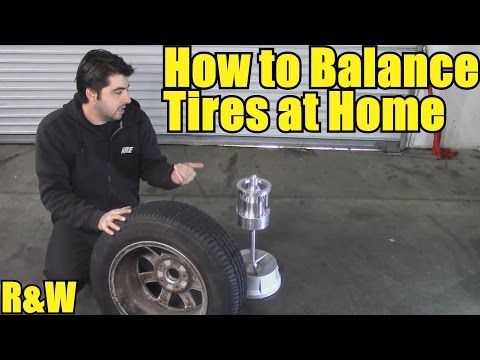 I usually don't change tire sizes unless I'm trying to increase the ground clearance of my quad.
I usually don't change tire sizes unless I'm trying to increase the ground clearance of my quad.
5. Add nitrous oxide.
Adding a nitrogen kit to your ATV can give you a nice speed boost when you really need it. In fact, they are not that difficult to install or use.
There are several different nitrous oxide configurations you can choose from, such as wet or completely dry.
6. Update the exhaust.
Upgrading the exhaust system on your ATV can be expensive and require some work. However, this is a surefire way to improve the performance of your ATV. Since more air can come out of the engine, it can take in much more air. nine0006 . This unit works perfectly in parallel with a high flow air consumption system.
If you can't pay for an entire exhaust system from the exhaust manifolds down, you can always get an efficient overhead exhaust. It won't boost power as much as an efficient exhaust system, but it will certainly give you a bit more horsepower.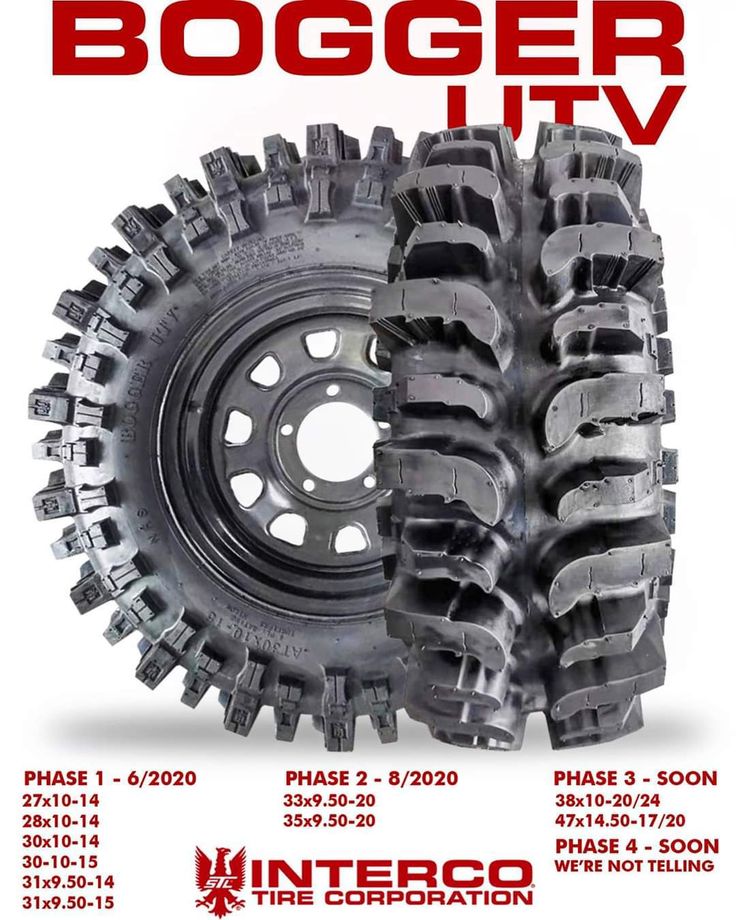
Generally, service exhaust systems are larger than the supply, or are definitely tapered for gradual increase in size. This provides even more airflow through the engine. nine0005 With even more combinations of air and gas, you will really feel even more power and speed while riding.
7. Change the gear ratio.
To change the equipment ratio, you will definitely need to get a new front or rear sprocket and change the existing one. Many cyclists do what's called "downshifting" where you get a big rear sprocket to increase speed. This will cause your full throttle to drop. nine0003
To "prepare" you should get a smaller rear sprocket, which will certainly increase your full throttle, but decrease your speed.
You need to make a decision whether you want to increase speed or increase full throttle.
8. Install the large diameter kit.
Installing a large bore kit may require a lot of effort but will greatly increase productivity.